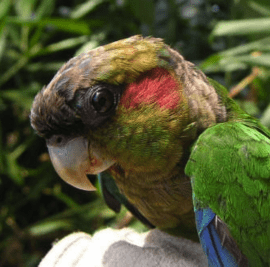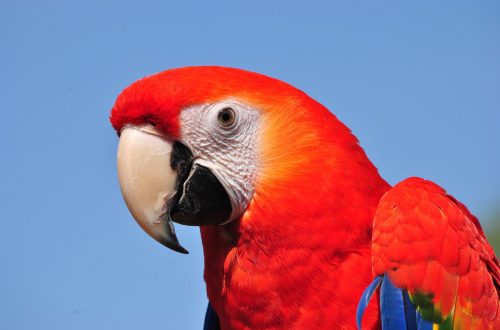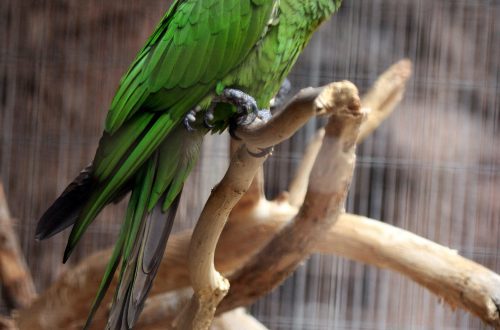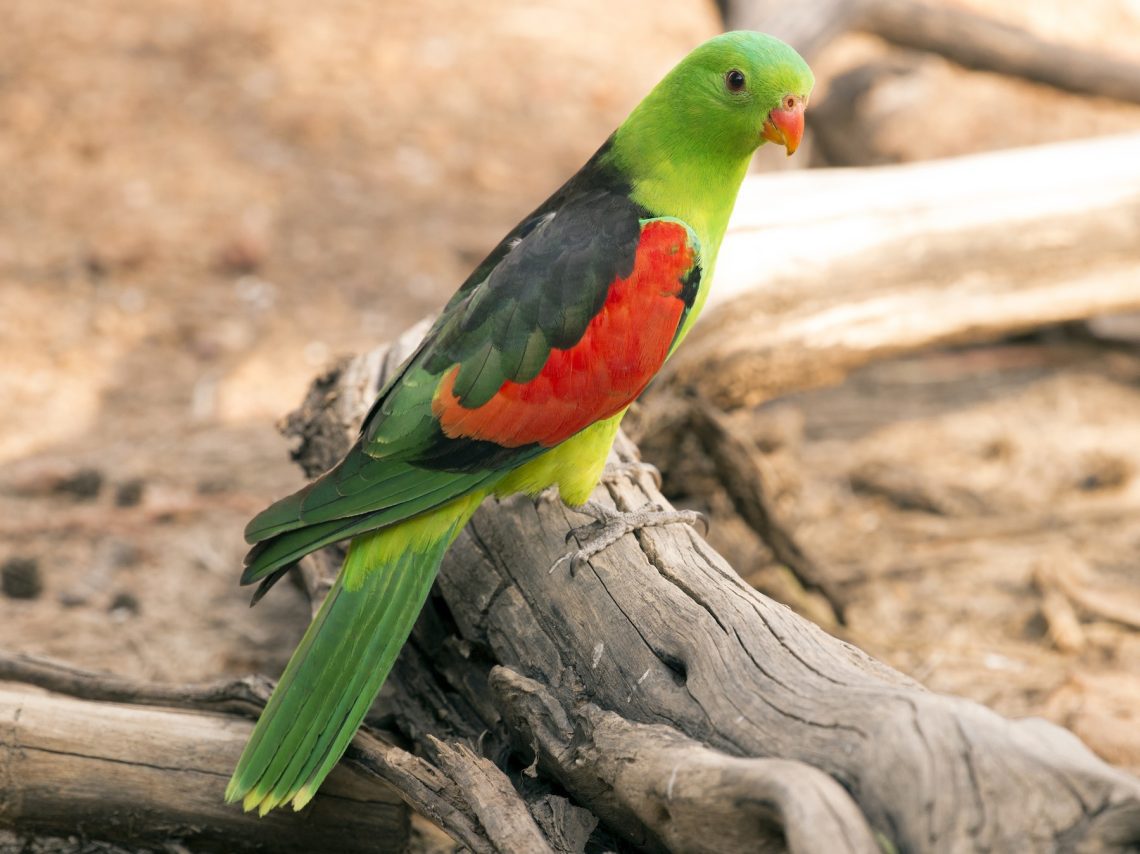
red-winged parrot
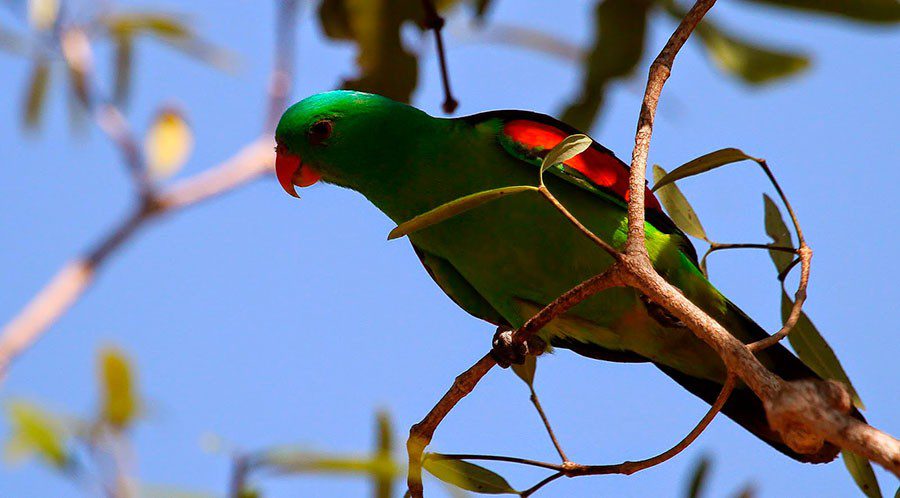 Photo: red-winged parrot in the wild
Photo: red-winged parrot in the wild
Red-winged parrot (Aprosmictus erythropterus)
Order | Parrots |
family | Parrots |
Race | red-winged parrots |
APPEARANCE
The parakeet has a body length of up to 35 cm and a weight of up to 210 grams. The main color of the body is bright green. Males have a green head, black-green back, bright red shoulders, dark green tail and flight feathers. Beak from carrot-orange to red, small in size. Paws are grey. The color of females is slightly different – it is dimmer, on the flight feathers of the wings there is a red border, the lower back and rump are blue. The species includes 3 subspecies that differ in color elements and habitat. They can form pairs with the Royal Parrot and give fertile offspring. The life expectancy of these parrots with proper care is up to 30 – 50 years.
HABITAT AND LIFE IN NATURE
The species lives in eastern, northern and northeastern parts of Australia, as well as on the island of Papua New Guinea. The species is quite numerous. They live at an altitude of about 600 meters above sea level in subtropical and semi-arid regions. They settle in thickets of eucalyptus along the banks of rivers, in acacia groves and savannahs, and do not disdain agricultural land. Usually found in small flocks of up to 15 individuals, usually at the end of the breeding season. They are usually noisy and quite conspicuous. They feed on small plant seeds, fruits, flowers and insects. Mistletoe seeds are sought out in the mangroves. The nesting period in the north begins in April. In the south, it falls on August – February. Birds nest at a height of about 11 meters, preferring voids in eucalyptus trees. The female lays 3 to 6 eggs per nest and incubates them for about 21 days. The chicks leave the nest at the age of 5-6 weeks and stay with their parents for some time, while they feed them.
TABLE OF CONTENTS AND CARE
These birds have been kept at home for a long time, they are quite large, bright, and breed quite well in captivity. Unfortunately, these birds are rare for sale. These are quite long-lived parrots. The only disadvantages are that these birds need to be kept in large spacious enclosures (up to 4 meters), since the birds need constant flights. In the aviary, poles with bark of the desired diameter should be installed. They get along well with other proportionate species, but during the mating season they can be aggressive. They are not badly tamed, they can sit on the arm or shoulder, take a delicacy from the fingers and from the palm. They have a pretty pleasant voice. The ability to imitate is rather modest.
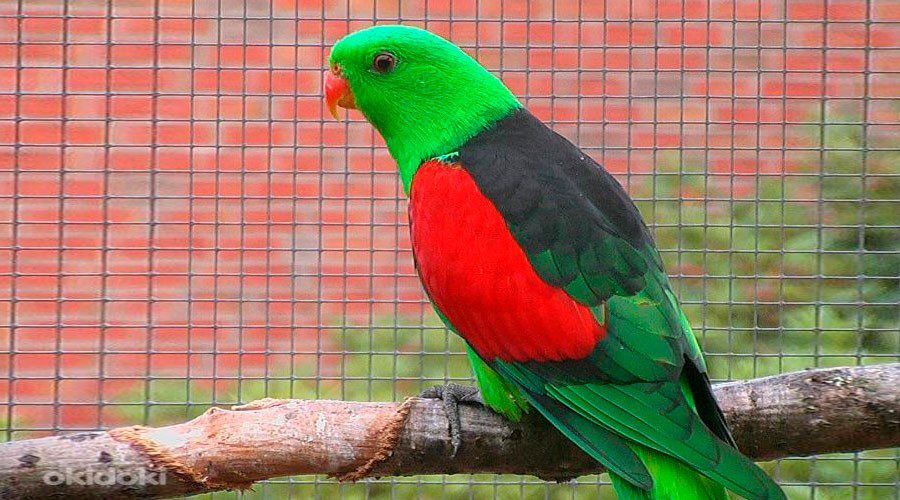 Photo: red-winged parrot – keeping in a cage
Photo: red-winged parrot – keeping in a cage
FOOD
For a red-winged parakeet, an Australian Parrot Grain Mix will do. The composition should be canary grass, oats, safflower, hemp, Senegalese millet. Sunflower seeds should be limited as they are quite oily. The diet should include sprouted cereals, beans, lentils, corn, green foods (chard, lettuce, dandelion, wood lice). From vegetables – carrots, zucchini, green beans and peas. From fruits – apples, banana, pomegranate and others. Also in the diet should be berries and nuts – pecans, peanuts, hazelnuts. Do not forget about the sources of calcium and minerals – sepia, chalk and mineral mixture. Offer the birds branch food.
BREEDING
Birds reach puberty no earlier than 3 years, the birds must be healthy even after molting. Before breeding birds, it is necessary to prepare – increase daylight hours to 15 hours and include animal feed in the diet. The nesting house should be 30x30x150 cm and the entrance 10 cm. The birds should be alone in the aviary, since they are quite aggressive during the breeding season. These birds are characterized by a mating dance – the male usually brings various objects to the female (for example, pebbles) and, bowing, puts them in front of the female. Sawdust or shavings with a layer of 7 cm are placed at the bottom of the nesting house. The chicks molt into adult plumage within 2 years.



